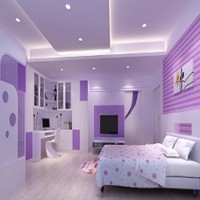
Wood is a common choice as a flooring material due to its environmental profile, durability, and restorability. Bamboo flooring is often considered a form of wood flooring, although it is made from a grass (bamboo) rather than a timber.
Engineered Wood flooring is composed of two or more layers of wood in the form of a plank. The top layer (lamella) is the wood that is visible when the flooring is installed, and is adhered to the core (or substrate) which provides the stability.
We have the best manufacturers for laminate wood flooring, creating high-pressure laminate flooring that is durable, easy to maintain and visually pleasing.
Wood floors are some of the most beautiful and warmest floors you can have in your home. And not only are they beautiful, but they're a good investment too. Homes with wood flooring have proven to have a higher resale value and sell faster than comparable homes without wood floors. Wood floors now come in a variety of types, species and finishes so you can find the right floor for your taste and budget.
You'll find wood floors come in two basic types:We offer a qualitative range of vinyl flooring that are more than just interior decoration. These vinyl flooring find usage in various industries, factories, warehouses, storage areas and also for domestic purposes. We procure these vinyl flooring from the reputed vendors in the market, who are known for their qualitative products and have huge credibility in the market .
Vinyl Sheet FlooringCommonly called sheet vinyl, vinyl sheet flooring constitutes 85-90% of the vinyl flooring market. Sheet vinyl comes in a variety of roll widths from 6ft to 12ft. Because of its size, sheet vinyl allows the installer to cover large areas quickly and results in fewer seams that could allow moisture to reach the sub-floor. If installed in a small room, you are often able to install the product without any seams at all, making sheet vinyl for use in bathrooms moisture could otherwise damage the sub-floor. Where you are unable to avoid a seam, they can be sealed using a heat welder or chemical bonding.
Vinyl Tile, Plank and Strip FlooringVinyl tile, plank and strip flooring are installed as a sequence of individual tiles. All of these forms of vinyl flooring have produced with squared edges allowing the installer to butt each individual piece up against the other. Although it takes longer to install these products it can be more convenient for homeowners to work with because it can be done in a step by step process. In addition, many of the products available come with grout lines and other geometric patterns that help to alleviate the appearance of seams. Tile vinyl is also much easier to transport because they are easily packed into boxes as separate pieces, unlike sheet vinyl which comes in a roll.
Common Vinyl Flooring InstallationsVinyl flooring is most commonly laid over a wood sub-floor topped with a plywood underlay. The underlay is used because it is smoother than the sub-floor and makes for an easier installation. In the case of sheet flooring, mastic (an adhesive) is spread evenly over the underlay with a notched towel. The vinyl sheet is then placed onto the adhesive and rolled flat with a heavy floor roller. Many manufacturers are now making self-adhesive peel-and-stick vinyl sheets and tiles that require no additional adhesive.